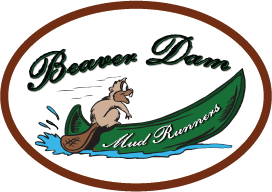FAQ

Frequently Asked Questions.
Will we ship to Canada or Alaska?
Yes, we will. Please email us your full shipping address and we will send you a shipping quote-info@beaverdammudrunners.com
What tools do you need to assemble these?
Two large crescent wrenches, a standard socket set, two screwdrivers (Phillips and Flat), needle nosepliers, medium Loctite and a grease gun with Mercury 2-4-C grease or marine grease (waterproof grease).
Do I need any other parts besides what is included in the kit?
No. For most engines with a gas tank, you do not need anything except tools to assemble. Each kit comes with a wiring harness so most engines are just "plug and play".For electric start motors, you will need a battery and cables to attach the battery to the engine. Most V-Twin motors do not have gas tanks. You will need fuel line and a gas tank for them. The 22HP Harbor Freight V-Twin sometimes needs an external,electric fuel pump prevention product. The external shaft and handle are galvanized. The engine brack and transom mount is powder coated and made out of very thick steel.
Having a hard time keeping the prop in the water?
You want the prop riding in the wake of the boat in the "sweet spot". This is usually in the "rooster tail" or right behind it. Remember that small adjustments can make big improvements in these longtails. Here is a good checklist.
1. Make sure the Skeg is pointing directly down.
2. Don't run too short of a shaft. The wider the boat,the longer of a shaft you need. The bigger and faster the motor, the longer the shaft you will need. Our large and small kits come with the longest shaft that is available. You can specially request a shorter shaft. We mainly carry a 65in shaft as a shorter option.
3. Put more weight in front of the boat. Too much weight in the back makes it harder to get on plain and harder for the engine to push the boat.
4. The transom bracket should normally be mounted with the hole for the gimble shaft positioned on the outside of the transom. If you, have it mounted onthe inside of the boat, this moves the prop forward a couple inches. You want the prop to rest directly inthe wake of the boat.
5. Balance and prop placement can also affect performance. Because not all engines weigh the same, our longtail has adjustment holes on the side of the engine base. Moving the engine base back will create additional tail weight. This also moves the prop back so it can rest in the wake of the boat.Reposition the engine base one set of mounting holes at a time. Test run the longtail and reposition if necessary.
6. Running too large of a propeller for the engine/hull can also cause the shaft to ride up out of the water. Over propping is the #1 mistake we see. Bigger is not always better and it can also cause your engine to bog down and lower your RPMS. Try a smaller prop especially with heavier loads. The standard aluminum props are all made with the same pitch so you can only go up and down in propsizes. Weedless props are available on our website and have more pitch. You will need a slightly smaller weedless than your normal, standard props that come with the kits. Quote from a customer: "I canget on plain with a bigger 8.5in prop on my 15HP when I am running it by myself. However, when I add two people and gear, I have to downsize to an 8in prop to get on plain.
7. Move the transom bracket a couple inches to the starboard side (right side) facing forward. You mightbe surprised how much this helps with the prop popping and it's an easy fix.
8. Running our longtail on too wide of a hull, anything over 48" measured across the bottom, can cause the shaft to climb out of the water. Unlike allother longtails, the Thai longtail prop is surface piercing and designed to run in the crest of the two wakes where they meet behind the boat. The wider the hull, the further behind the boat the two wakes meet. If the shaft is running in the trough located forward of the wakes, it will be very hard to control. Narrow hulls are better for longtails. However, if you have a wider boat, use the planning tabs to help keep the prop in the water.
9. Try bending the skeg, which is the bottom guard below prop, towards the port side. If the prop is popping out on the port side, just bend it barely and in small increments. A crescent wrench can be used to do this.
10. If followed correctly, steps 1-9 will remedy the vast majority of handling and performance issues encountered. If steps 1-9 have not worked, do we recommend the planing tabs as the final solution. We include adjustable, bolt-on planing tabs in our kit. There are two holes in the skeg(bottom guard) on your shaft.
